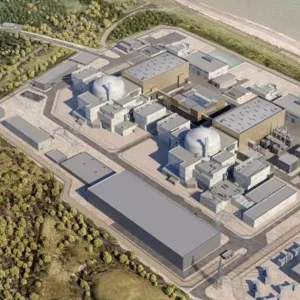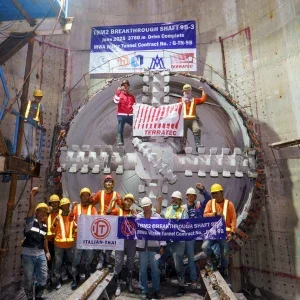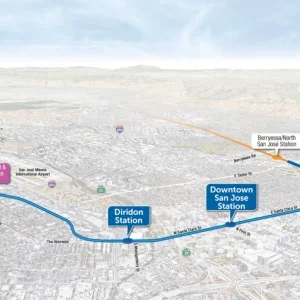On November 8, Align JV engineers received data from TBM Florence showing signs of a dissolution feature ahead. They put extra monitoring in place and informed the landowner/leaseholder and the dissolution feature collapsed to form a sinkhole the following day.
An HS2 spokesperson said the TBMs often passed through smaller dissolution features without incident but on this occasion the feature collapsed. It is on the edge of a field near Hyde Heath at the bottom of a valley where the tunnel is relatively shallow.
“There is a known geological fault in the area and after seeing data from the tunnel boring machine which gave an indication of a potential feature, we informed the landowner and put extra monitoring in place at the surface before the sinkhole appeared,” the spokesperson said.
“We have been engaging with all key stakeholders including Buckinghamshire Council, Affinity Water and the Environment Agency, throughout the excavation of the Chiltern tunnels and we will keep them updated as we go forward.”

Image: Gareth Williams
In May this year, a similar dissolution feature collapsed to form a sinkhole above the Chiltern tunnel near Little Missenden. The hole was repaired and water monitoring showed no significant impact on water quality.
The Chilterns Conservation Board, the public body responsible for conserving the Chilterns Area of Outstanding Natural Beauty, said the incident “again highlights the risks involved with tunnelling through geologically unstable chalk”.
“We understand that the on-board monitoring systems alerted the TBM crew to unstable ground conditions so that above ground surveying was in place when the sinkhole occurred. However, having previously been told tunnelling procedures would normally mitigate against such sinkholes occurring, it is particularly concerning that a second hole has appeared six months after the well-reported sinkhole developed in the grounds of Shardeloes historic parkland,” the board said in a statement.







